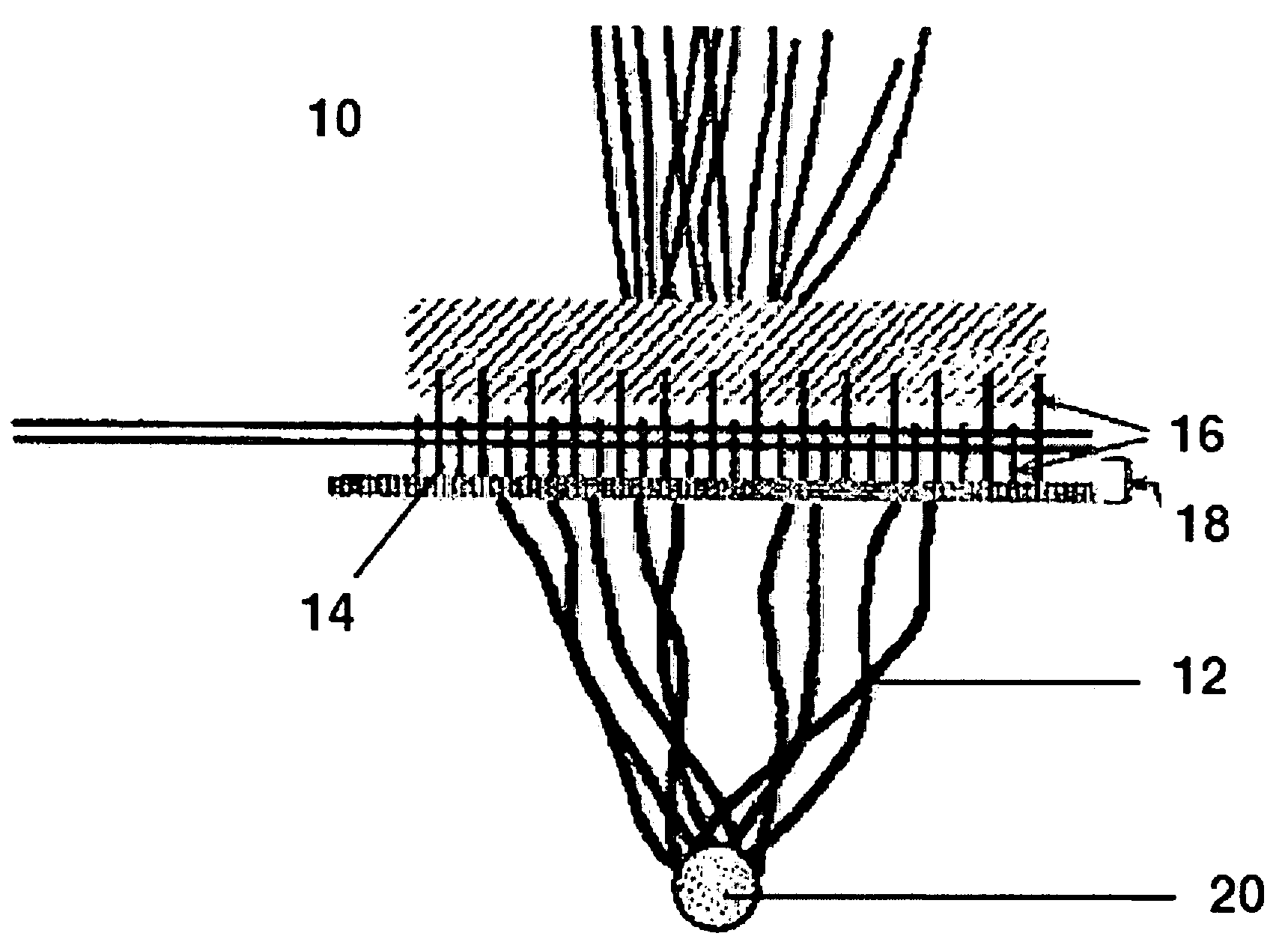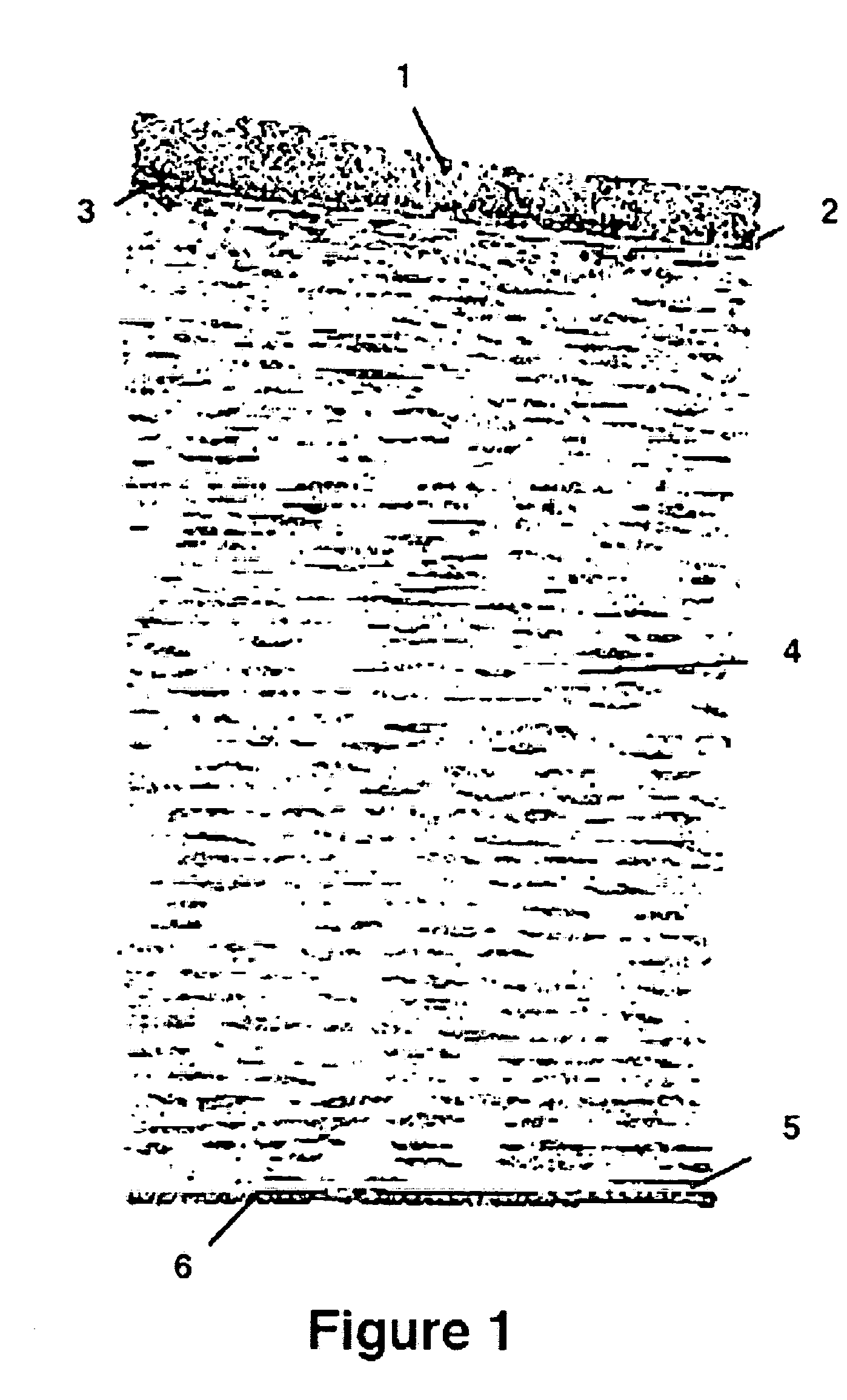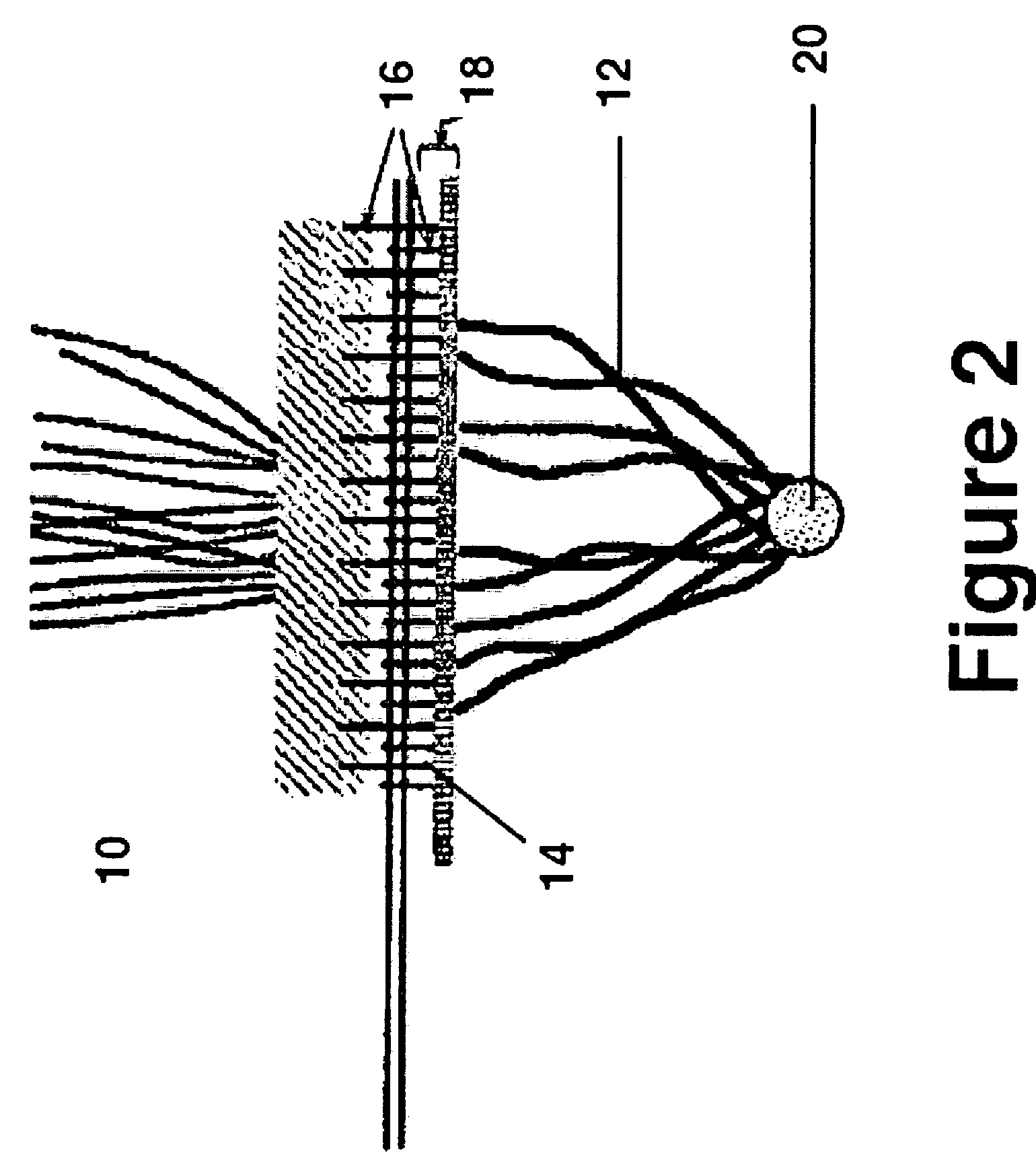However, even with the advent of alternative
surgical procedures designed to address specific shortcomings identified through analysis of the increasing body of
patient data, and despite a generally advanced state of knowledge on such essential topics as
corneal wound healing and ocular
optics, the incidence of negative outcomes remains measurable, although small.
Given the increasingly large number of patients undergoing these procedures, even a small percentage of negative outcomes impacts a significant number of patients.
However, use of wavelengths in this region is also characterized by the transmission of considerable energy from the target spot to surrounding tissue, even to the point of causing considerable
peripheral tissue damage.
However, despite maintaining a relatively intact
epithelium (except for margins of the flap where the mechanical or photomicrokeratome cuts through the
epithelium), the process of creating the stromal flap can trigger a significant
wound healing response, as well as lead to other complications with more profound long term consequences for optical outcomes than that associated with PRK.
Thus, any surgical procedure, even if successful in achieving a photoablative revision of the refractive properties of the corneal stroma, cannot be an optimal choice for vision correction unless it also is capable of minimizing the types of cellular responses that are manifest as increases in corneal
opacity resulting from factors such as keratocyte activation, stromal
fibrosis and epithelial
hyperplasia.
Such a loss of transparency would lead to a sub-standard optical result for the patient.
However, in
LASIK, the negative consequences from epithelial damage along the periphery of the flap can outweigh the contribution to these consequences of
wound healing responses (such as cellular
apoptosis) that occur within the stroma.
This wealth of data, in turn, has led to attention on complications relating to creation of the stromal flap, particularly where mechanical defects in such flaps have occurred.
Moreover, the creation and manipulation of the stromal flap can lead to inducement of optical aberrations such as
coma and spherical aberrations arising from biomechanical modifications to the cornea.
However currently available methods for disepithelialisation suffer from inherent shortcomings that impose a practical limit on the degree to which it is possible to attain the theoretically available advantages from procedures utilizing an epithelial flap.
The main problems are related to epithelial-stromal interactions resulting from damaged basal cells, as well as from incomplete or improper reattachment of the flap where the surgeon has difficulty raising the flap, damage / tearing of the flap during manipulation,
drying of the flap, and non-adherence of the flap.
However, problems that can occur with the flap such as tearing or non-adherence can result in an outcome (discarding of the damaged flap) that is effectively the same as if the
epithelium had been debrided, as in standard PRK.
Procedures employing reversible removal of an intact epithelial flap or sheet (see below), impose even greater demands on the process of removal of the epithelial layer.
Creation of the epithelial flap alone does not guarantee optimal outcomes to the surgical procedure.
In addition, deviations from optimal smoothness can lead to unwanted wound healing responses in the cornea that can lead to negative optical outcomes.
However,
in vitro studies of model systems comprising single
cell layers of epithelial cells have indicated that the most common conditions for application of
ethanol to the
corneal surface for creation of the epithelial flap (18%
ethanol for 25 seconds) are sufficient to lead to a toxic effect of the
alcohol on epithelial cells such that detrimental wound response mechanisms would result.
However, this positive result is tempered by recognition that it is impossible to utilize
ethanol for disepithelialisation without also experiencing the negative effects arising from ethanol's cytotoxic activity.
Indeed, recent data indicate that current methods for removing the epithelium result in loss of epithelial
cell viability so that, rather than promoting beneficial healing processes, re-application of the epithelial layer (comprising dead or dying cells) can actually hinder post-
surgical recovery when compared to techniques where the epithelial layer is not replaced and regenerates through normal healing processes.
In the field, however, there is considerable disagreement over interpretation of much of the accumulated data, particularly with respect to long-term effects where, taken objectively, the data fail to illustrate any significant clinical
advantage from LASEK over other surface
ablation techniques.
Moreover, experimental and clinical studies with the Pallikaris separator, as well as with other commercially available separators, have revealed “epithelial” flaps containing stroma, Bowman's layer and damaged epithelial cells.
This type of inconsistent separation would add the risk of complications related to undesirable and / or unreproducible retention of Bowman's layer and stroma, and very undesirable damage to epithelial cells.
In a similar fashion, use of
femtosecond IR lasers to remove the epithelium below the Bowman's layer creates additional issues that can interfere with achieving optimal optical results for patients.
Nor, given current limitations on spatial resolution in either control of the
laser or measurement of thickness of the epithelium, is it likely that these inherent limitations can be adequately addressed.
Without more precise location of the plane of cleavage of the epithelial / sub-Bowman's layer, it will be impossible to realize the theoretically available advantages from photodisepithelialisation.
Likewise, as has been alluded to above, the incidence and magnitude of the complications arising from such techniques have decreased considerably from the earliest years when these procedures were first available.
However, the fact remains that as small as the incidence of complications has become, it is still far from negligible and current advances do not seem to be able to provide promise of further reducing this finite level of negative outcomes.
 Login to View More
Login to View More  Login to View More
Login to View More 


